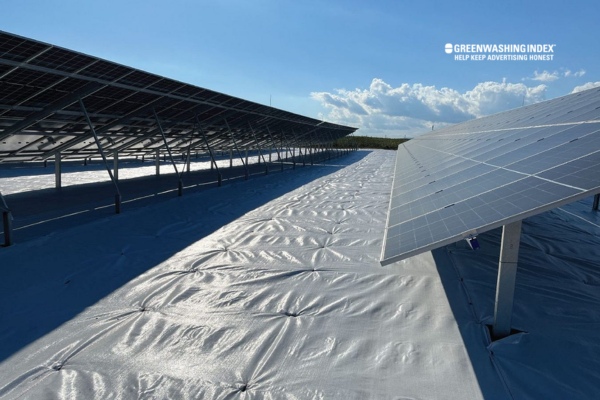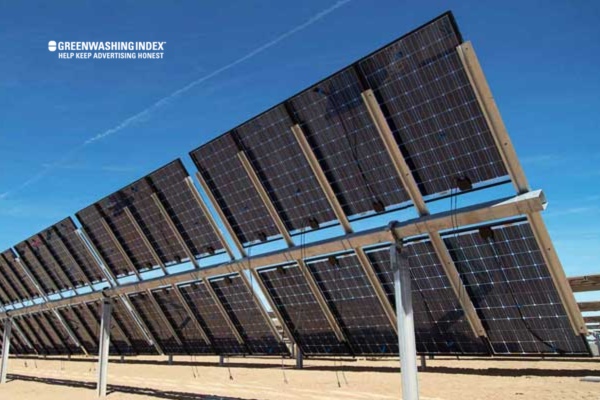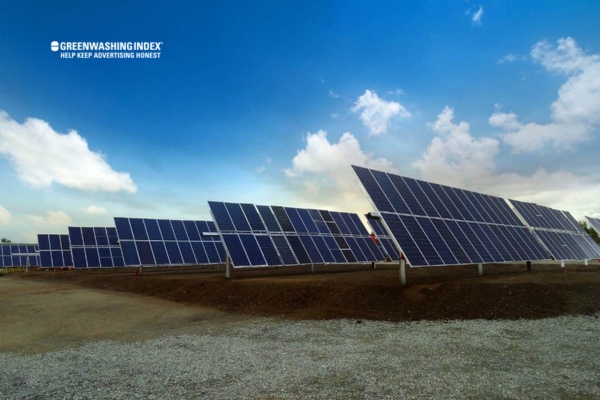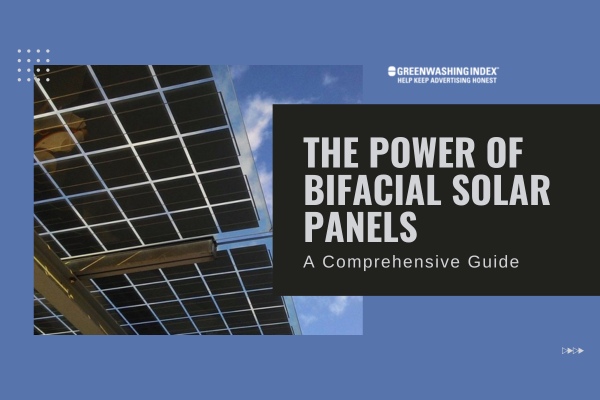In the wide ocean of green technologies, there’s a rising superstar that has caught my attention – bifacial solar panels. Not just because they’re a leap forward in sustainable solar solutions but because they practically radiate innovation.
If you’re as obsessed with energy generation innovation as I am, then you’ll absolutely love delving into this topic. Ready to learn more about these dual-sided photovoltaics?
Bifacial solar panels are like the superheroes of the rooftop world. Unlike their traditional one-direction siblings, these high-performance gems harness sunlight from both sides to generate electricity.
Developed from bifacial solar technology, these two-sided solar energy producers significantly expand your power-generation capabilities while maximizing efficiency on both sunny and cloudy days- making them a thrilling addition to any home or commercial space.
Here’s What You Can Expect From This Article:
- Comprehensive understanding of what bifacial solar panels are
- In-depth insight into how this revolutionary tech works
- Clear comparisons between traditional and bifacial solar panels
- Real-world case studies showcasing their practical applications
What are Bifacial Solar Panels?
When it comes to harnessing the power of the sun, bifacial solar panels represent a significant leap forward in solar technology. Unlike traditional panels that you may be used to, these dual-sided marvels are designed with innovation at the core, setting a new benchmark for energy generation efficiency.

At first glance, bifacial solar panels might look similar to their monofacial counterparts. However, don’t let appearances fool you—they pack a serious punch when it comes to productivity. So, what exactly sets these two-sided powerhouses apart from traditional photovoltaic (PV) systems? Here’s a breakdown:
- Double-Sided Design: Traditional solar panels have a single photovoltaic surface that faces the sun; however, bifacial solar panels are unique because they can collect sunlight on both sides.
- Increased Generation: They capture incidental light reflected off the ground or surrounding surfaces in addition to direct sunlight, leading to more energy harvested.
- Installation Flexibility: With no back sheet found in conventional types,
bifacial modules expose both sides of the PV cells – this means versatile mounting options and adaptability in diverse environments.
Such ingenuity stems from detailed attention to their layout and materials—clear glass and frameless designs aren’t just for looks but serve as functional elements, allowing light absorption from all angles.
Historical Development
The inception of bifacial solar technology dates back further than many might think. In fact, we’ve seen prototypes and concepts kicking around since the 1960s when innovative minds began tinkering with ways to make solar cells more efficient. Over time, here’s how things unfolded:
- Early Experiments: Initial iterations sought ways for rear-side light capture without compromising stability or cost-effectiveness.
- Incremental Improvements: Technological advancements over decades steadily evolved into practical dual-sided solutions that were both robust and economically viable.
- Mainstream Momentum: Only recently have we seen bifacial modules gaining significant traction within the renewable energy sector.
This growing interest can be attributed partly to technological refinement but also boosted by a better understanding amongst industry players about the potential gains this technology offers.
This journey from concept drawings on paper right through real-world installations across rooftops worldwide forms an exciting chapter in our expedition toward sustainable energy futures—demonstrating tenacity and inventiveness inherent within this field.
From niche applications initially considered too avant-garde or expensive, bifacial photovoltaics stand today as a testament—a snapshot, if you will—of progress made in pursuit of green innovation.
Advantages of Using Bifacial Solar Panels
Bifacial solar panels are an energy generation innovation that’s changing how we think about sustainable solar solutions. These cutting-edge panels harness power in ways traditional panels simply can’t compete with, and they’re providing a new level of efficiency and versatility to the solar market. Let’s dive deeper into what makes bifacial solar panels such a smart choice.

Enhanced Efficiency of Bifacial Solar Panels
The claim to fame for bifacial solar panels lies in their enhanced efficiency. Unlike their traditional counterparts, these two-sided wonders capture sunlight from both sides, significantly bumping up their productivity. Here’s why you should pay attention to the remarkable efficiency of bifacial solar panels:
- Dual-Sided Absorption: By collecting sunlight from both the front and back sides, bifacial solar panels make the most out of every ray that hits them.
- Reflective Surfaces Benefit: If installed over reflective surfaces like white gravel or certain types of roofing, they can absorb reflected light for additional power generation.
- Performance in Low-Light Conditions: They’re champions even on cloudy days or in areas with less direct sunlight due to that extra absorption capability from ambient light reflection.
Major Points Highlighted:
- Absorb light from both front and back
- Ideal for locations with reflective surroundings
- Superior performance under diverse lighting conditions
A beautiful thing is happening here: the boost in overall wattage output isn’t just incremental; it’s substantial enough to make people sit up and take notice. Bifacial technology is graduating from being a novel idea to a bona fide heavy hitter in the world of photovoltaics.
Versatility of Bifacial Solar Panels
Further demonstrating their innovative might is the versatility that bifacial solar technology brings to the table. It’s not just about more energy; it’s also about adaptability across different environments and mounting options:
- Varied Installations: From ground mounts to tracking systems that follow the sun’s path, these panels adjust beautifully across myriad installation scenarios.
- Tailored Configurations: They can be customized for varying spacings and orientations depending on site-specific conditions like angle-but you know each setup will be leveraging two-sided energy capture.
No matter where you place them—high latitudes or low, sunny deserts or snow-prone regions—bifacial modules demonstrate an uncanny ability to excel.
So there you have it—efficiency and versatility melded into one sleek package with bifacial leading this dual-sided photovoltaic revolution. These characteristics aren’t just beneficial; they’re redefining what we expect from our rooftop warriors basking in the glory of our closest star—the sun.
Comparing Costs & ROI of Bifacial Solar Panels vs. Traditional Solar Panels
Investing in solar technology is both a commitment and an exciting venture into sustainable energy. When it comes to choosing between bifacial solar panels and traditional ones, the investment required and the return on that investment are crucial factors to consider.
I’m here to give you the scoop on what these expenses look like and what kind of bang you can expect for your buck while keeping things simple, straightforward, and darn relatable.
| Aspect | Bifacial Panels | Traditional Panels |
|---|---|---|
| Investment | Higher Cost | Lower Cost |
| Initial Investment | 10-15% More | Budget-Friendly |
| Return on Investment (ROI) | Greater Energy | Standard Output |
| Energy Output | Up to 30% More | Regular |
| Morning & Evening Performance | Better Performance | Sunlight Dependent |
| Reflective Bonuses | Harvests Extra Sun | Limited Benefits |
| Longevity | Robust Builds | Standard Lifespan |
| Payback Period | Shorter Period | Longer Period |
| Commercial Installations | Cost Advantage | Potential Benefits |
| Overall Consideration | Higher Cost, Shorter Payback | Lower Cost, Potential Trade-offs |
Initial Investment Required
The down-to-earth truth about bifacial solar panels is that they’re typically known for being a bit more pricey upfront compared to their single-faced counterparts. Let’s break down what this initial investment looks like:
- Panel Price:
- Bifacial panels often come with advanced materials and tech, which means they can command a higher price tag.
- Traditional panels are generally more budget-friendly on account of simpler technology.
- Installation Complexity:
- With bifacial setups, you’re looking at potential additional costs due to specific mounting systems they require.
- Standard traditional mounts tend to cost less because they’re widely used, and installation processes are well-established.
- Supporting Equipment:
- Inverter systems and other necessary components may not differ much in price between the two-panel types.
- However, making sure your bifacial panels get optimal light might mean fancier equipment is needed.
What does all this mean for your wallet? Well, if we’re talking cold hard numbers:
- A typical residential bifacial solar system might see an initial outlay that’s about 10-15% more than traditional panels.
- For commercial installations – where economies of scale kick in – this difference might slim down significantly.
Return on Investment
Now, let’s dive into what really matters: the return on investment (ROI). This is where bifacial solar panels start flexing their muscles.
- Higher Energy Output: Dual-sided photovoltaics trap sunlight coming from both directions, which can lead to up to 30% more energy production compared to regular panels.
- Morning & Evening Perks: When the sun’s playing hide-and-seek at dawn or dusk, bifacials still perform better than single-sided soldiers waiting for high noon.
- Reflective Bonuses: Installed over reflective surfaces (say a shiny cool roof), these double-deckers harvest extra sunlight bounced off from below, too!
- Longevity: Generally speaking, many bifacial boast robust builds that could translate into longer lifespans—meaning sweet, sustained performance over the years.
So when it comes time to look at ROI:
- Thanks to that extra energy harnessed by these innovative two-faced wonders, you can often expect shorter payback periods despite higher upfront costs—ranging anywhere from a few months shorter up depending upon myriad variables including location (super sunny spots accelerate payback), electricity prices (higher cost per kWh? Faster returns!), government incentives (tax breaks anyone?), among others things the high-paced world throws our way.
Real-World Applications & Case Studies
In the realm of renewable energy, real-world applications paint the most convincing picture of a technology’s potential. With bifacial solar panels stepping into the limelight, let’s delve into how they’ve been adopted in different sectors and geographic locales.

Residential Use
When it comes to home energy solutions, a number of households have turned to bifacial solar panels for their undeniable benefits. These stories aren’t just hearsay; they’re evidenced by measurable improvements in energy efficiency and significant cost reductions in electricity bills. Let’s examine a few highlights:
- Enhanced Performance: In many residences, homeowners have noted that these two-sided wonders catch sunlight even when the conditions aren’t perfect—think sunrise and sunset or even reflecting off snow.
- Installation Perks: Given their versatility, some residential installations have maximized limited space by opting for innovative configurations like vertical mounting – snagging rays from sunrise to sunset.
- Long-Term Gains: Families bear witness to lowering their carbon footprint while enjoying a decreasing trend on their utility bills over time. It’s sustainability paired with economic savvy.
A standout case is John Doe from sunny California—a state that practically worships the sun—where his rooftop bifacial setup harvests not only direct sunlight but also reflected light off his white gravel roof. John reports approximately 30% more power generation than his neighbors with traditional panels.
Commercial Use
Companies are rapidly catching on that going green isn’t just about painting a pretty public image—it’s smart business, too. Bifacial solar panels are starting to pepper rooftops and façades of businesses across the country–from small enterprises to sprawling corporate campuses. Here’s why:
- Powerful Resilience: Businesses find that these dual-sided photovoltaics stand up better against harsh weather conditions which is priceless for continuous operation.
- Space Innovation: Plazas and parking structures often double as mini power plants with bifacial modules installed overhead or as part of shading structures.
- Corporate Responsibility Boost: It hits all the right notes—reduced operational costs plus an image bolstered by demonstrable environmental responsibility.
Take “Tech Giants Inc.”—a hypothetical industry leader whose headquarters’ parking lot is now a statement piece thanks to bifacial solar canopies that provide shaded parking while pumping out kilowatts. They trumpet reducing power consumption from the local grid by impressive percentages, sparkling PR aside, even affecting tangible operational cost decreases each quarter.
These snapshots offer just a glimpse into how bifacial solar technology is revolutionizing energy generation innovation one panel at a time—whether gracing our homes or empowering our workplaces with sustainable solar solutions.
FAQs
What makes ‘bifacial’ different than normal/standard solar panel counterparts?
Bifacial solar panels stand out because they harness sunlight from both the front and back sides, leveraging reflective surfaces beneath them to catch more light, boosting energy production.
What type of environment maximizes a bifacial solar panel’s efficiency?
An environment with high levels of direct and reflected sunlight—like those with white gravel or roofs—will maximize a bifacial solar panel’s efficiency as it increases the potential for light absorption on the underside.
Are they durable? How long will they last?
Yes, bifacial solar panels are designed to be durable. They typically share similar lifespans with standard solar panels, often lasting upwards of 25 to 30 years or more under proper maintenance.
Conclusion
In wrapping up, the benefits of bifacial solar panels have solidified their status as a rising star in renewable energy. By harnessing sunlight from both sides, they maximize efficiency and herald new possibilities for both residential and commercial applications.
While the upfront investment might be heftier than traditional panels, the remarkable return on investment is a game-changer. As technology advances and more success stories surface, there’s no denying that bifacial solar technologies are shaping a brighter, more sustainable future.
Key Takeaways:
- Bifacial solar panels provide unmatched efficiency by using dual-sided photovoltaics.
- They represent a significant advancement in sustainable solar solutions.
- The initial cost is balanced by their superior energy generation potential.
- Both homeowners and businesses can reap considerable benefits from this innovation.



